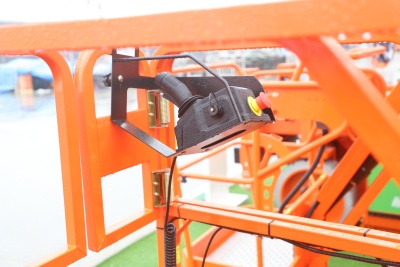Multi axis joysticks have carved out a significant place in various aspects of modern life, facilitating precise control and interaction in a multitude of scenarios. Here are some key application areas.

Industrial Machinery
In industrial settings like manufacturing plants and construction sites, multi axis joysticks are crucial for operating large machinery. Take cranes, for example. Crane operators rely on these joysticks to manage the boom\\\\\\'s elevation, rotation, and extension. When hoisting a heavy load, the operator can smoothly adjust the boom\\\\\\'s position in different directions, ensuring the load is precisely placed at the desired location. In mining, excavator operators use multi axis joysticks to control the digging arm\\\\\\'s movement, bucket rotation, and the machine\\\\\\'s overall direction. This level of control not only boosts productivity but also minimizes the risk of accidents.
Medical Equipment
Medical technology has adopted multi axis joysticks to aid in complex procedures. In minimally invasive surgeries, surgeons use these joysticks to control robotic surgical tools. The joystick\\\\\\'s design allows for minute adjustments of the tool\\\\\\'s position, orientation, and movement within the patient\\\\\\'s body. This precision reduces the risk of damage to surrounding tissues, leading to faster patient recovery times and improved surgical outcomes. For instance, in laparoscopic surgeries, the surgeon can use the multi axis joystick to navigate the surgical instruments through small incisions with great accuracy.
Agricultural Machinery
In modern agriculture, multi axis joysticks are used to operate agricultural machinery. Tractor drivers can use these joysticks to control the implement\\\\\\'s depth, angle, and the tractor\\\\\\'s speed simultaneously. For example, when plowing a field, the driver can adjust the plow\\\\\\'s depth and angle while maintaining a consistent speed, ensuring uniform soil cultivation. In combine harvesters, the operator can use the multi axis joystick to control the cutting height, threshing mechanism, and the machine\\\\\\'s forward speed, optimizing the harvesting process and increasing efficiency.
Material Handling Equipment
In warehouses and distribution centers, multi axis joysticks are employed in material handling equipment such as forklifts and pallet jacks. Forklift operators can control the lift height, tilt of the forks, and the vehicle\\\\\\'s movement using a multi axis joystick. This enables them to pick up and place heavy loads with precision, even in tight spaces. Pallet jack operators can also use these joysticks to maneuver the jack and lift pallets to the desired height, streamlining the material handling process and reducing the risk of damage to goods.
Robotics and Automation
Robots, especially those used in complex tasks, are often controlled by multi axis joysticks. In industrial robotic arms used for assembly line work, the operator can use the joystick to guide the arm to pick up components, position them accurately, and perform delicate assembly operations. In search - and - rescue missions, remotely operated robots equipped with cameras and sensors are controlled via multi axis joysticks. The operator on - site can maneuver the robot through debris - filled areas, climb over obstacles, and reach areas that are dangerous for humans, all while having real - time visual feedback from the robot\\\\\\'s cameras.
In conclusion, multi axis joysticks have proven to be an indispensable technology across diverse fields. Their ability to provide precise and intuitive control has revolutionized operations in industrial machinery, medical procedures, agricultural tasks, material handling, and robotics. As technology continues to advance, we can expect to see even more innovative applications of multi axis joysticks, further enhancing efficiency, safety, and the quality of work in these and potentially new areas. This adaptability and growing utility underscore the importance of this technology in shaping the modern world of work and beyond.